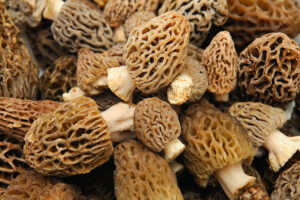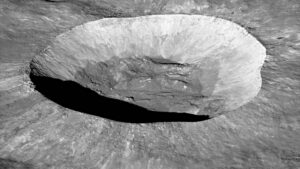You are probably wondering if these images are Photoshopped. They aren’t. Pink lakes may be anomalies but you can find them on almost every continent. As of now, scientists have recorded 49 on our planet. They vary in hue, ranging from the color of bubblegum to bright crimson. Although they are similar in appearance, the three pink lakes featured here tell their own stories…
Dusty Rose Lake, Canada
Isolated in Tweedsmuir Provincial Park, British Columbia is Dusty Rose Lake. It lies 2,000m above sea level on Thunder Mountain’s east side and is the only freshwater pink lake in the world.
It is anoxic rather than saline. This complete lack of oxygen does not allow life to survive, including microorganisms and extremophiles. Some theorize that its Pepto Bismol pink color comes from dissolved rock flour from glacial runoff and the purplish-pink rocks of the mountain.

Dusty Rose Lake from the air. Photo: Instagram
Because it is so isolated and no hiking trails lead there, only the Nuxalk nation and some locals are familiar with it. Unlike some other pink lakes, its color remains constant throughout the year.
Oddly enough, this is not the only spot in Canada to turn pink. Alberta is home to Cameron Falls, which turns pink after heavy rains transport loose red sedimentary rock called argillite down a short but rocky decline. In Quebec, there is a popular attraction called “Pink Lake”, that does not turn pink but rather bright green in the summer. Why “Pink Lake?” Good question… (It was actually named after a pioneer family named Pink.)
Lake Hillier, Australia
Lake Hillier is probably the most famous and photographed pink lake in the world. It contrasts sharply with the surrounding dark green forest and the dark blue Pacific Ocean. Explorer Matthew Flinders first discovered it in 1802. He named it Lake Hillier, after crew member William Hillier, who became ill and died on the expedition.
It sits on Middle Island in Western Australia and measures 600m long and 250m wide. It is highly saline and gets its bright bubblegum color from interactions between different halophiles in the water and salt-crusted shoreline.

Lake Hillier on Middle Island. Photo: Matteo_it/Shutterstock
These organisms include dunaliella salina, archaea, haloquadratum, psychroflexus, salinibacter, and bacterioruberin. Researcher Ken McGrath studied the lake and found almost all the species produce a pigment called carotenoid. You find this in fruits and vegetables like guava, papaya, pumpkin, and carrots. Scientists believe that the present algae’s photosynthetic properties also play a part in the color, but this theory is still under consideration.
While the water is not toxic to the skin, swimming is not recommended, and salt harvesting is unwise. In the late 1800s, a brief salt mining experiment failed within a year. More organisms than salt were extracted. Nevertheless, its unique qualities prompted authorities to protect and designate it a place of “subregional significance” in 2002.
Like Dusty Rose Lake, Lake Hillier’s color does not change. The best way to see it is by plane or boat. However, do not stop your search here. There are four other pink lakes in Australia; Lake Eyre, Hutt Lagoon, Lake Bumbunga, and Lake MacDonnell. This undoubtedly makes Australia the pink lake capital of the world.
Lake Masazir, Azerbaijan
Lake Masazir or Masazirgor may not seem like much. It is usually a short stop by a fence along the road to the capital of Baku. You take a few pictures and go on your way. But sunsets are a different story. This is when this unassuming lake fully expresses itself. This 10 sq km saline and endorheic lake (a lake with no exit for its water) is considered one of the most remarkable pink lakes in the world. The lake houses at least 1,735 million tons of salt.
The presence of halophiles and high concentrations of chloride, sulfate, and iodine in the water and crusty shores create this striking red color. Unfortunately, salt harvesting operators do taint the pristine quality of the site. The government-regulated area has produced a couple of brands of salt since the early 19th century. A fence surrounds it, so tourists are unable to get a closer look at its colors and occasional mushroom-shaped formations.

Mushroom formations in Lake Masazir. Photo: Bikomins/Shutterstock
People have described their experience with Lake Masazir as hit or miss. Sometimes, the colors are vibrant and mesmerizing, other times, dull and pale. This is because the color changes throughout the year. It can vary between pale pink, peach, murky brown, or brilliant red. In summer, it turns a deep red as the sun makes the water warmer and the color more pronounced.






